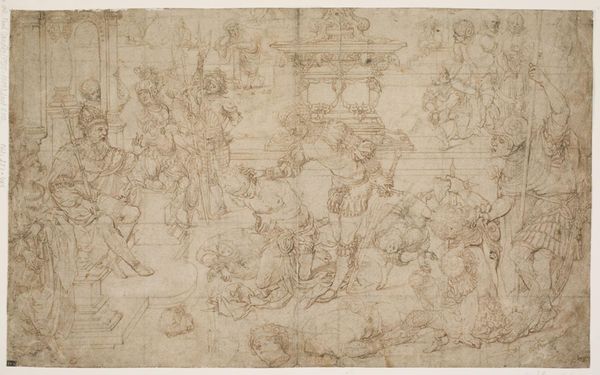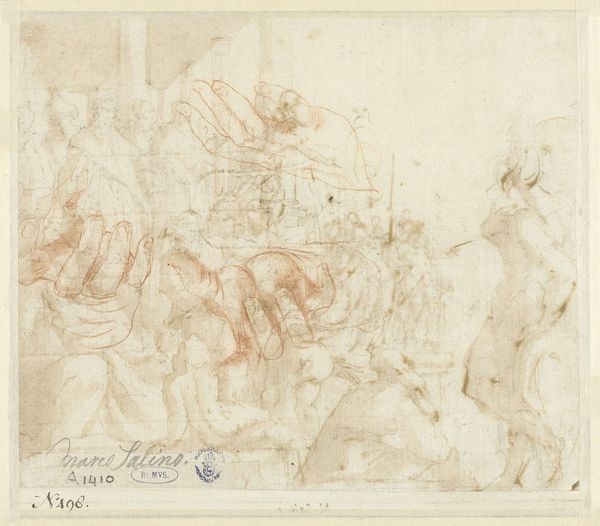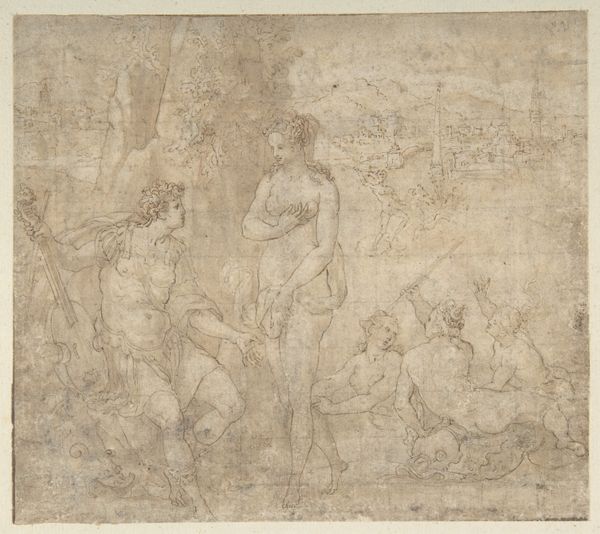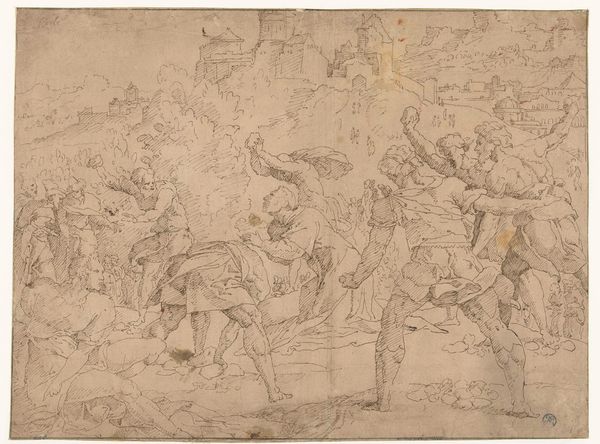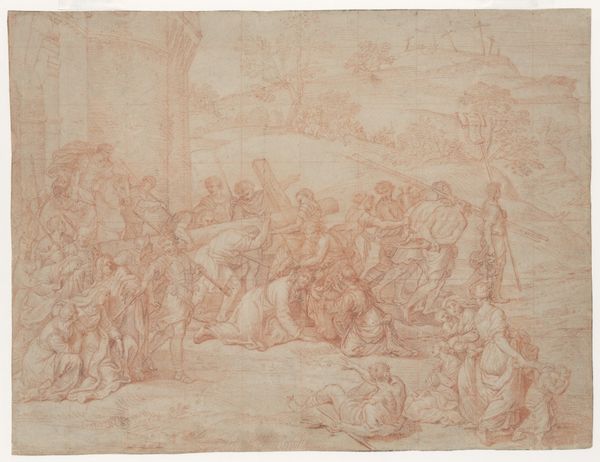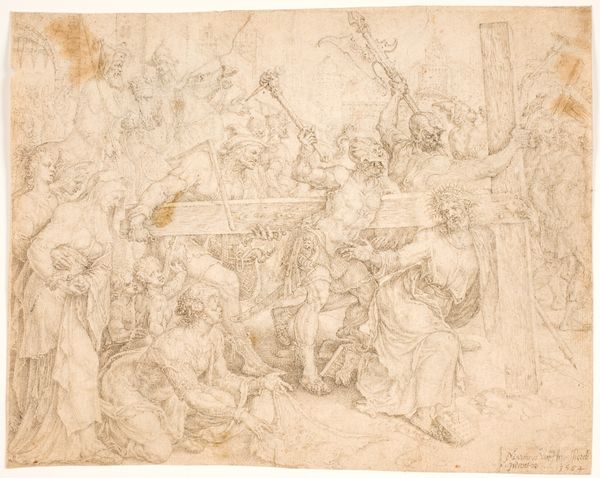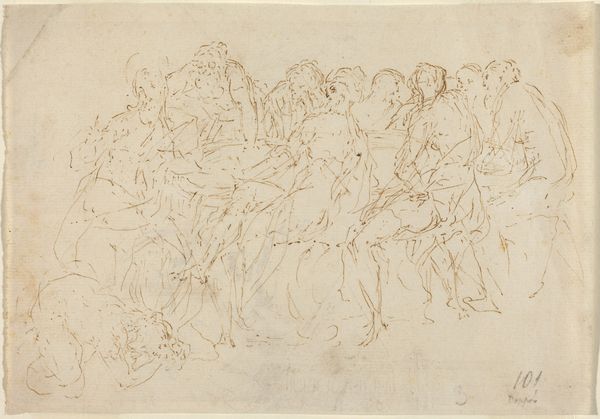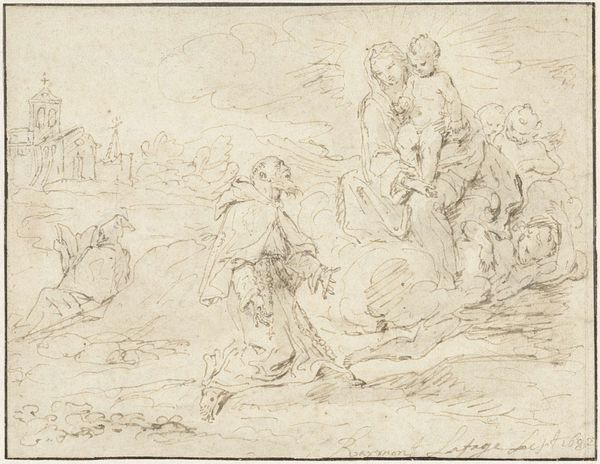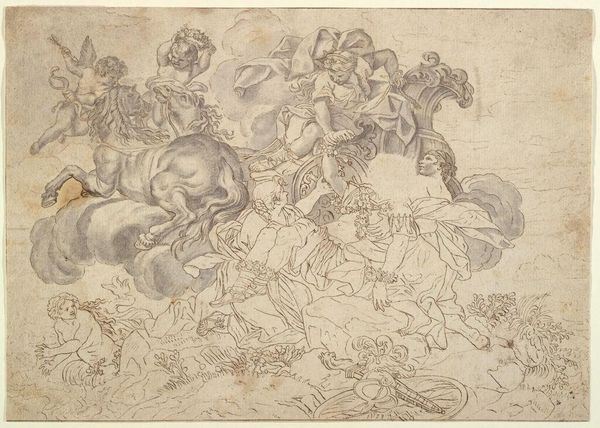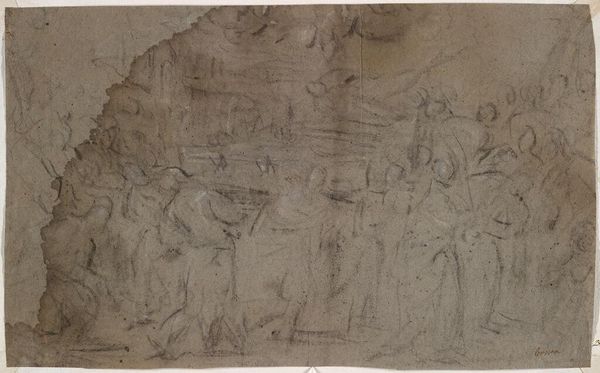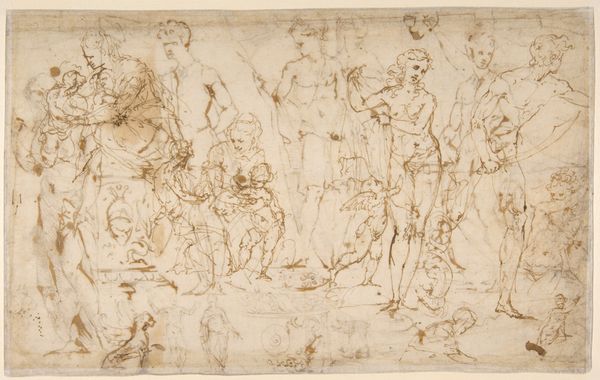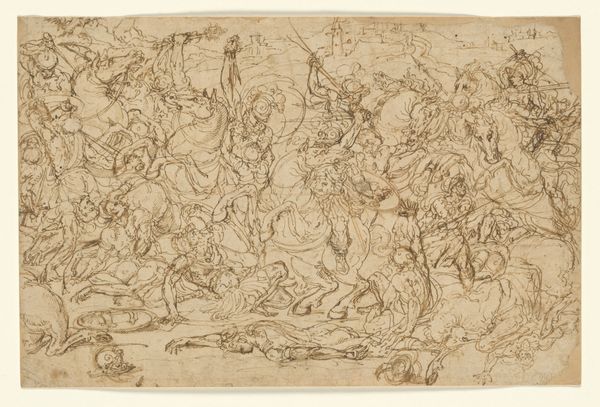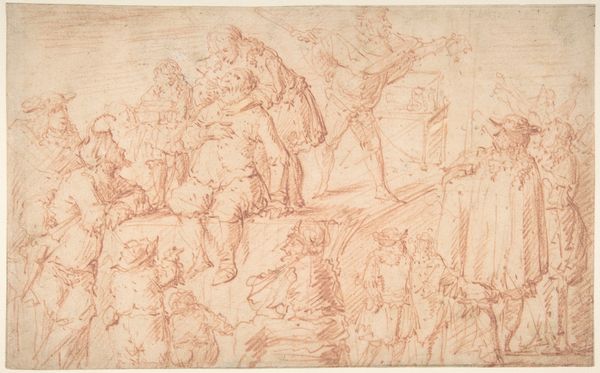
drawing, ink, pencil
#
drawing
#
narrative-art
#
pencil sketch
#
etching
#
figuration
#
ink
#
pencil
#
history-painting
#
academic-art
Dimensions: height 193 mm, width 245 mm
Copyright: Rijks Museum: Open Domain
Editor: So, this is "The Meeting of Jephthah and His Daughter," an anonymous drawing from sometime between 1700 and 1800. It's rendered in pencil and ink. What immediately strikes me is the contrast between the chaos of the returning army and the isolated group to the left. What's your take? Curator: It's important to contextualize drawings like this within the broader history of print culture and the development of public taste. History paintings like this were very popular, not just as paintings, but also as widely distributed prints. Consider the Rijksmuseum’s role: how does displaying a preparatory drawing, rather than a finished history painting, influence our understanding of artistic production? Editor: That's a good question! It feels more raw and immediate, perhaps? Like a behind-the-scenes glimpse? Curator: Exactly. But beyond that, think about *why* this biblical story was so appealing. Jephthah’s story explores themes of duty, sacrifice, and the complexities of leadership, highly relevant in a period of intense political and social upheaval. Does the artist’s use of light and shadow contribute to the drama, or potentially critique, the decisions being made? Editor: I see your point. There’s certainly a theatrical quality to the whole scene. It's interesting to consider how this image, even as a preliminary sketch, engaged with ideas about leadership and sacrifice that would have been circulating in society at the time. It also highlights the political dimension of artistic representation during the 18th century. Curator: And the use of academic art techniques to portray narratives meant to instruct public behavior - what kind of instruction would this have been at that time, and for what audiences? Editor: Well, that perspective really changes how I see it. It's less about individual artistic expression, and more about a deliberate engagement with social and political discourse through art. Thanks, that gives me a lot to think about!
Comments
No comments
Be the first to comment and join the conversation on the ultimate creative platform.
